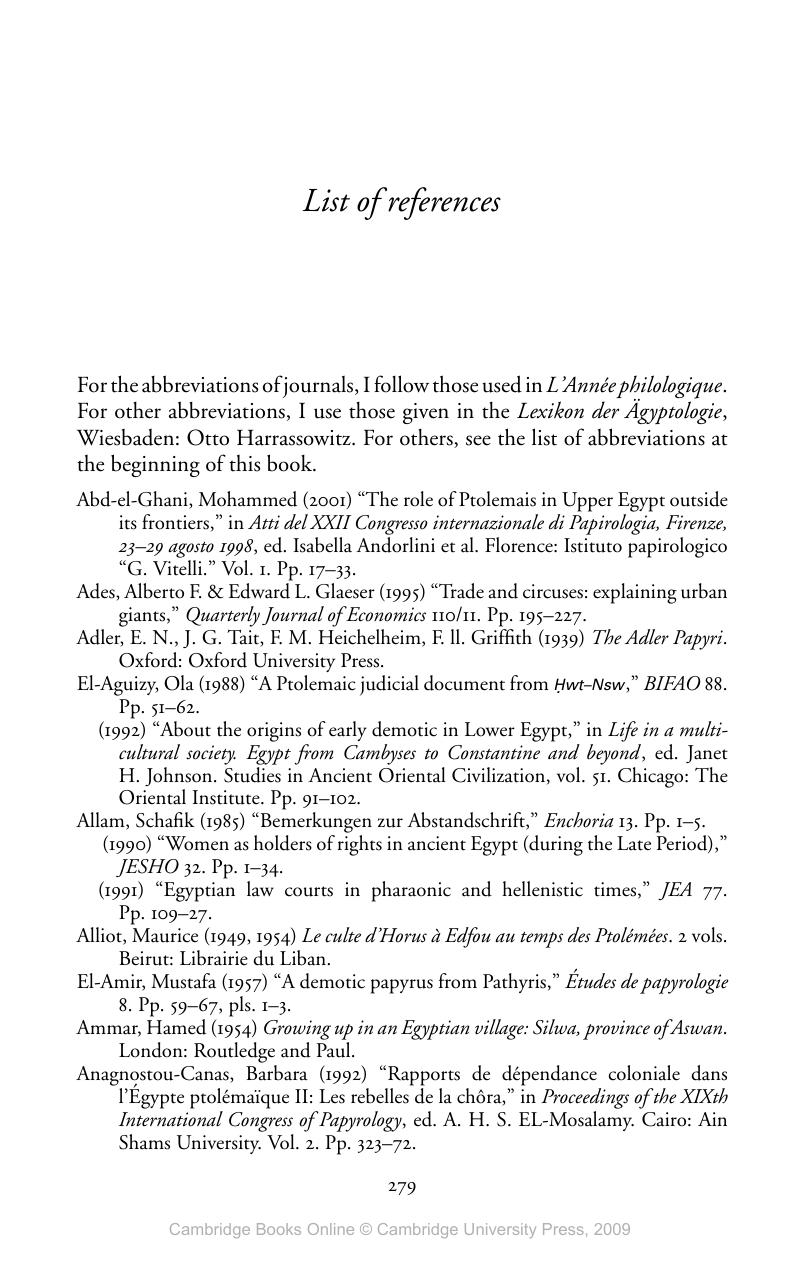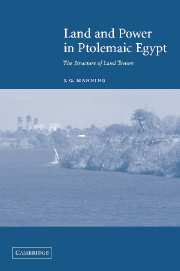Book contents
- Frontmatter
- Contents
- List of maps, figures and tables
- Preface
- Abbreviations
- Units of measure
- Maps
- Part I ISSUES AND HISTORICAL BACKGROUND
- Part II REGIONAL CASE STUDIES OF LAND TENURE
- Part III INTERPRETATION
- Appendix 1 Translation of the Edfu donation text
- Appendix 2 Ptolemaic demotic land transfers from Upper Egypt
- Appendix 3 Translation of P. Amh. gr. 49
- List of references
- Index of sources
- General index
- References
List of references
Published online by Cambridge University Press: 22 September 2009
- Frontmatter
- Contents
- List of maps, figures and tables
- Preface
- Abbreviations
- Units of measure
- Maps
- Part I ISSUES AND HISTORICAL BACKGROUND
- Part II REGIONAL CASE STUDIES OF LAND TENURE
- Part III INTERPRETATION
- Appendix 1 Translation of the Edfu donation text
- Appendix 2 Ptolemaic demotic land transfers from Upper Egypt
- Appendix 3 Translation of P. Amh. gr. 49
- List of references
- Index of sources
- General index
- References
Summary

- Type
- Chapter
- Information
- Land and Power in Ptolemaic EgyptThe Structure of Land Tenure, pp. 279 - 324Publisher: Cambridge University PressPrint publication year: 2003



